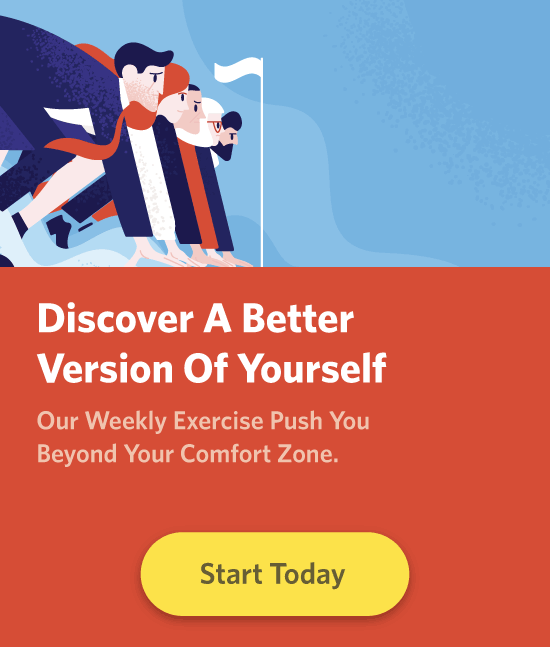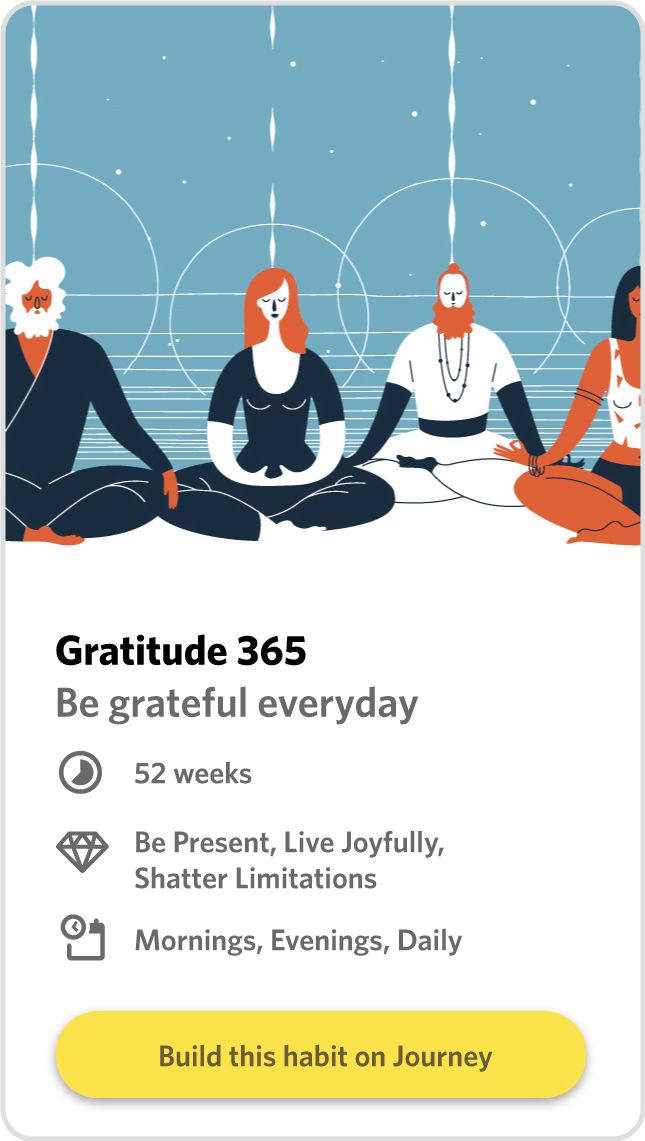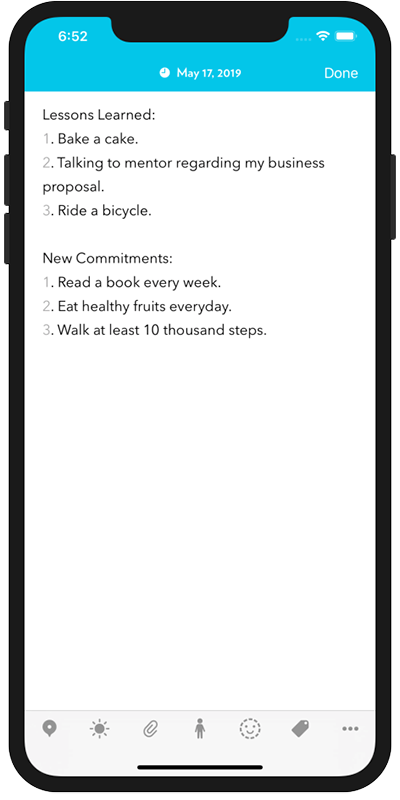Hal Elrod’s Miracle Morning App
The Miracle Morning by Hal Elrod is a book that goes into depth about how you can start your day – the best way possible. I'll share with you the 6 habits of Miracle Morning ritual and how to use it on Journey.

The Miracle Morning by Hal Elrod is a book that goes into depth about how you can start your day – the best way possible. In this article, I'll share with you the 6 habits of Miracle Morning ritual and how to use it on Journey journal app.
Hal Elrod was in a brutal car accident which put him into a coma for six days.
He was told he may never walk again.
He was in a position where many people would have become depressed and given up on life.
But he didn't.
Quite the opposite, came back stronger than ever. Hal Elrod went on to run ultra marathons, become a best-selling author and give keynote speeches around the world.
He attributed much success down to his morning routine.
He called it the Miracle Morning routine.
The Miracle Morning routine was established during his dark times. It allows him to start the day with a positive and motivated morning.
The Miracle Morning routine works through Habit Stacking.
What is Habit Stacking?
Rather than learning one habit at a time, you can build multiple habits into a sequence and learn that sequence as a habit. That is what Hal Elrod refers as Habit Stacking.
Let's say you wanted to start drinking green smoothies and reading habits.
You could make your green smoothie first and then read a book in the morning.
This habit stacking makes building momentum fast.
How to Practice Miracle Morning Routine?
The miracle morning is a habit stack which consists of six habits: Silence, affirmations, visualization, exercise, reading and scribing, and it works through momentum.
You may not feel like starting work immediately when you wake up.
But by doing Miracle Morning routine, you'll build momentum.
By the end of it you're ready to start your day.
Hal Elrod often suggests 10 minutes for each of the six steps. This isn't concrete and it can be adjusted based on your schedule.
1. Silence

The advantage of starting a day with Silence is that it puts you in the driver's seat for the day.
You aren't being led by your first impulses to check emails or go on Facebook.
But rather, you are gaining control.
Hal Elrod suggests any form of meditation or even sitting in silence, feeling calm and relaxed for a few minutes.
2. Affirmations

Photo by Olivia Snow on Unsplash
Next up, affirmations.
We put a lot of emphasis on washing our bodies and brushing our teeth but rarely on cleaning and maintaining a positive mind every day.
By feeding your mind a positive message in the form of an affirmation, it helps you to start the day feeling positive and upbeat
This works because your subconscious registers what you see and hear.
So, make sure you choose empowering words instead of limiting ones.
Susan Jeffords has a good advice about affirmations. You want to make your affirmations happening now, not in the future or the past, but they are happening right now in the moment.
Examples of positive affirmations:
- I'm getting stronger every day.
- I'm fulfilling my potential.
- I'm attracting joy into my life.
- I'm feeling exhilarated, agile and alive.
- I'm effectively communicating my needs and desires to my loving partner.
3. Visualization

Photo by Ann Danilina on Unsplash
Hal Elrod recommends you to go through your day and the tasks that you are going to tackle today in your head.
Let your thoughts linger around.
Just imagine yourself doing the task and overcoming any obstacles.
If you can see yourself doing it, there will be a better chance of you actually doing it.
This might sound strange but studies by the University of Chicago have found this actually happens. They did an experiment to test the effectiveness of visualization.
The task was to throw a basketball into a hoop from a set distance. The subjects were divided into A, B and C.
- Group A were told not to touch the basket over 30 days, no practicing or playing basketball whatsoever.
- Group B were told to practice throwing free throws for half an hour for 30 days.
- Group C were told to go to the gym every day for 30 days and spend a half an hour with their eyes closed simply visualizing hitting every free-throw.
The results:
- Group A showed no improvement
- Group B showed a 24 percent improvement in number of basketball hoop.
- Group C showed a 23 percent improvement in number of basketball hoop and they hadn't even touched the basketball.
If you can see yourself complete a task, you are more likely to succeed in achieving it. This makes you more confident and certain of yourself when you do a task.
Example:
In my morning routine, I see myself doing this to the best of my ability with few mistakes.
4. Exercise

Photo by Fezbot2000 on Unsplash
Now, you'll need to activate your body. This doesn't need to be a full-blown workout or an hour-long run.
You just want to get some blood flowing.
Exercising releases endorphins and it lifts your moods.
Exercising even just a little in the morning is an easy way to start your day feeling positive and upbeat!
You don't need any equipment. Just pick two or three exercises and do ten to thirty of each.
Here are three exercises you can do without equipment:
- Push-ups
- Squats
- Sit-ups
5. Reading

Photo by Annie Spratt on Unsplash
Confucius once said, "you cannot open a book without learning something."
Reading is a great way to start the day as it gives you an opportunity to fill your mind with positive ideas.
It takes your mind away from the petty things which are insignificant and moves your thoughts into great ideas.
Another reason it's good to read in the morning is because you will always have a set time to read.
So you'll less likely to procrastinate.
You may only be reading 10 pages a day. But if you're consistent, that will add up!
6. Scribing
Hal Elrod recommends keeping a journal. You can download a journal app such as Journey.
Divide the entry into two labels: Lessons Learned and New Commitments. Spend 10 minutes and come out one or two for each.
The lessons can be plain and simple, like a new recipe you have learned the previous day or they can be profound insights you have gained by talking with a mentor.
These help you to remember the lessons that you've learned every day so that you don't keep making the same mistake.
Once you have built up the momentum, you are now ready to start your work for the day.






